
| Home
| Photography Home | Cameras |
![]()
| Next |
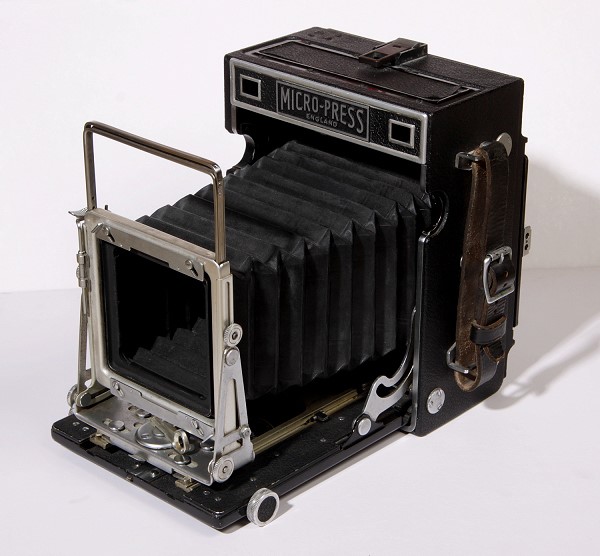
After World War Two the British Government brought in severe austerity measures, these
included restrictions on imports and one consequence was very few cameras were imported
until the restrictions were lifted in the early 1950's.
The Government encouraged British camera manufacture and the most noticeable new
products the
Reid cameras, and MPP's Micro Technical and Microcord/Microflex were all
based on German camera designs from the leading manufacturers, Leica, Linhof & Rollei.
MPP's first camera the 5"x4" Micro Technical was based on the Linhof Technika and was
released in the late 1940's and in 1949 a Press version of the camera with a Wray self-
capping Focal Plane shutter and a coupled Range Finder was reviewed in the British Journal
of Photography and advertised by MPP themselves.
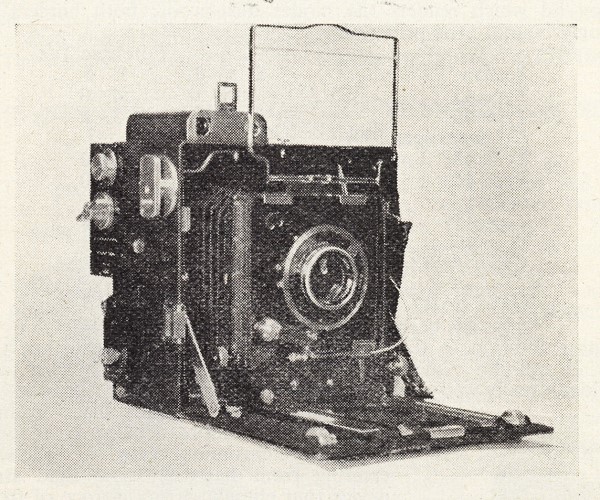
However this camera may have gone little further than the prototype stage as soon after quite
a different MicroPress appeared
which had nothing in common with the Micro Technical.
The biggest selling Press camera in the US at the time was the Pacemaker Speed Graphic
introduced in 1947, but this camera couldn't be Exported to the UK because of the import
restrictions. A 1949 BJP article by H.S. Newcombe, an author of photographic books and also a
photographic retailer, indicates just how scarce new cameras were in Great Britain at that time.
The new MicroPress introduced in 1950 was a Speed Graphic in disguise using many
Pacemaker parts housed in a slightly taller wooden body.
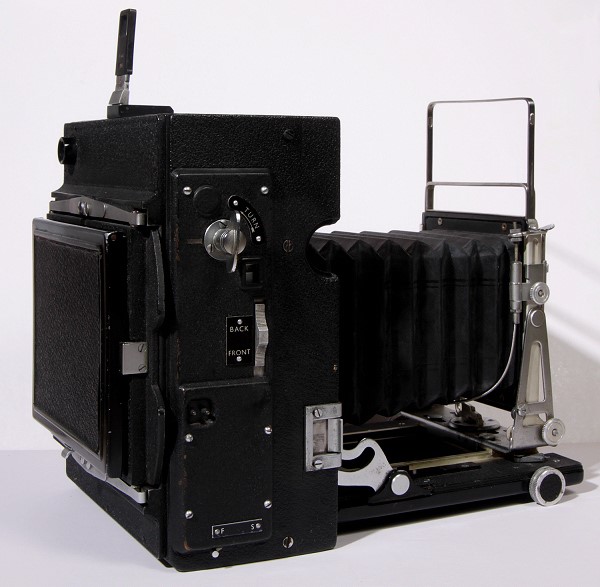
The MicroPress and Pacemaker Speed Graphic share the same shutter, release & cable,
front standard, lens board, focus track and bellows. The significant differences are the taller
body to house the range finder, the door & hinges and the film back. Earlier versions of the
one illustrated here used the Graflex rear sight. One anomaly is that both the later rear sight
and the Graflex wire Speed frame are adjustable for parallax
Nothing is known about the link between MPP and Graflex but it must have been beneficial
to both companies. MPP's owner
Mr. P. de Laszlo also owned Celestion an Electronics and
Loudspeaker manufacturer
and it's not known whether the wooden camera bodies were
made there or by Graflex in the US.
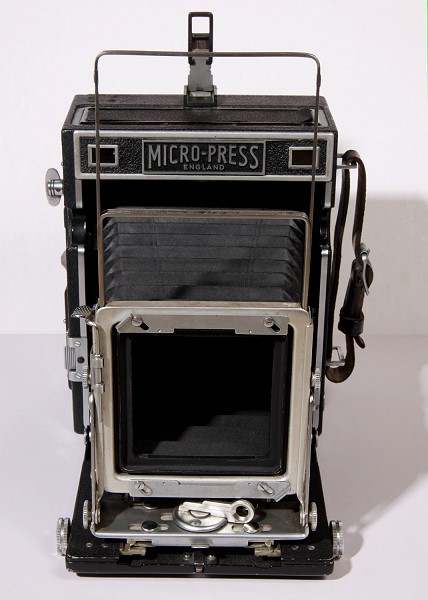
The MicroPress introduced the top mounted rangefinder and inter changeable cams 5 years
before
Graflex in the US, and with a
longer base it would have been more accurate.
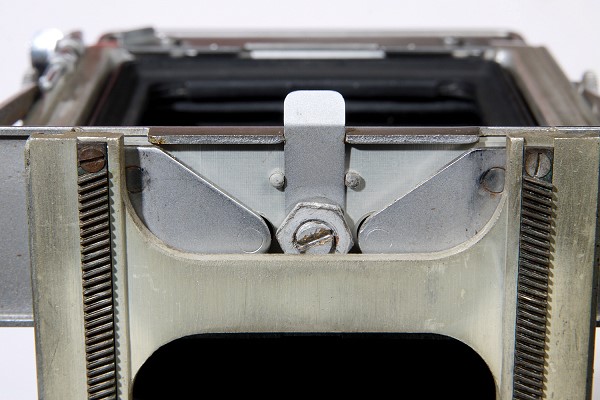
The focus track itself is slightly modified and has two strips of gear teeth added but the front
standard, bellows, lens board are fully interchangeable with a Pacemaker although some
threads are British rather than US
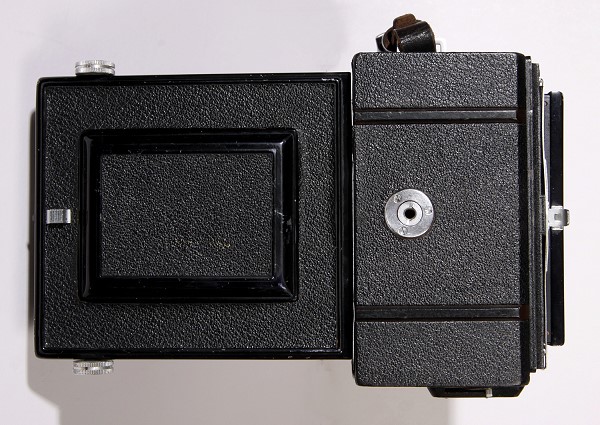
The door and base, note that the base is similar to the Pacemakers with the same inserts
which hide access to the inner rail track fittings.
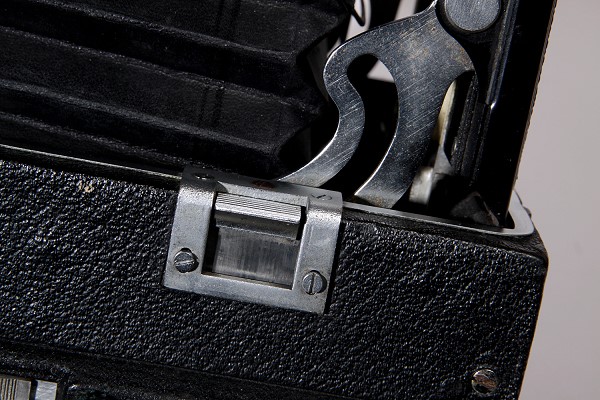
The shutter release which will operate both the focal plane and lens shutters.
Unlike MPP's Micro Technical and later Microcord/Microflex this Press camera clearly isn't a copy,
many of the parts were obviously made in the US
and MPP had dropped their own Press
camera design. There must have been financial advantages for both companies.
There is another coincidence both companies were involved with
the German camera manufacturer
Iloca, rebadging their 35mm cameras in the UK and US markets in the mid 1950's.
The link between the two companies is an enigma but the camera shows it clearly existed.
Many thanks to Matt Bigwood for loaning me the MicroPress for examination.
| Next |